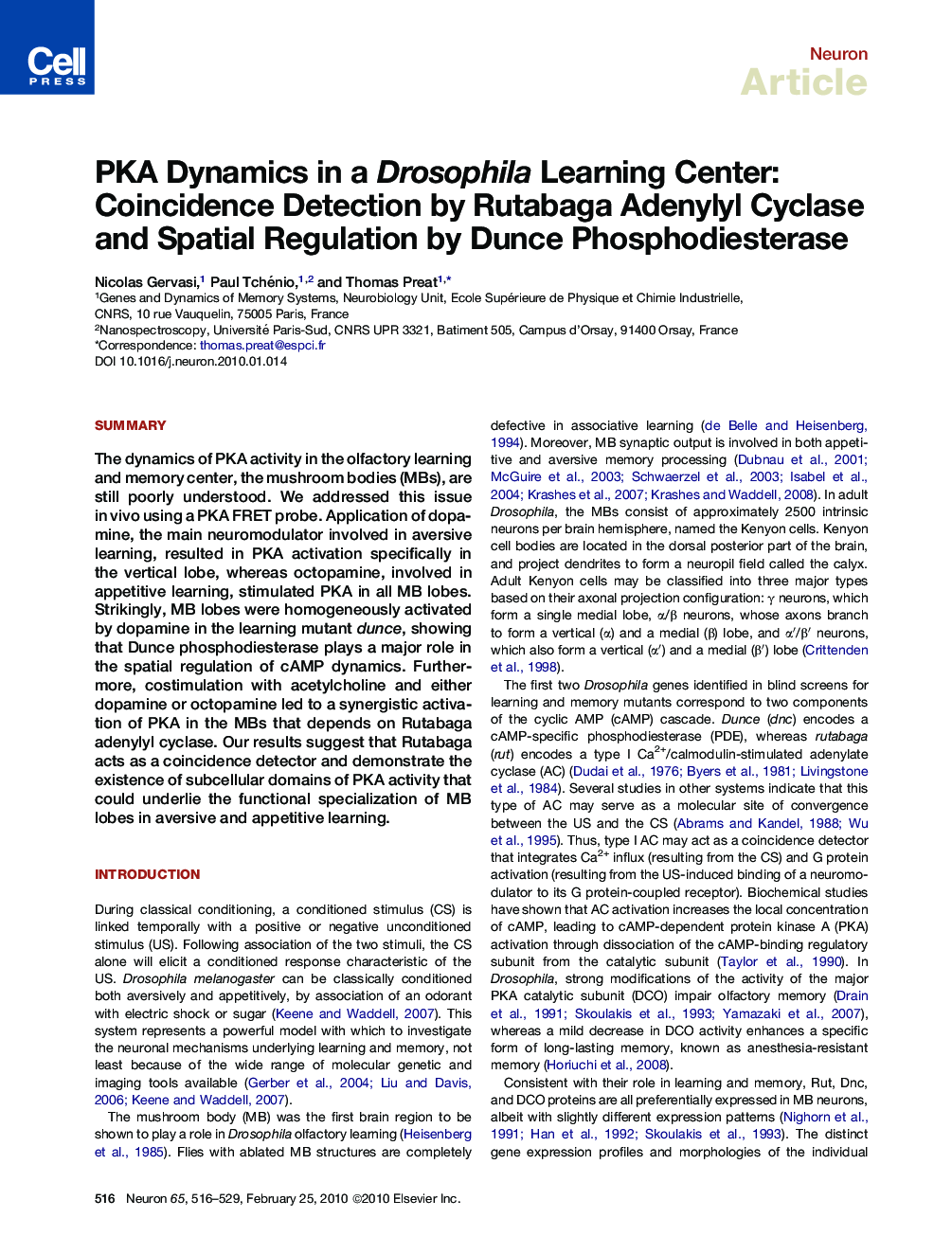| Article ID | Journal | Published Year | Pages | File Type |
|---|---|---|---|---|
| 4322653 | Neuron | 2010 | 14 Pages |
SummaryThe dynamics of PKA activity in the olfactory learning and memory center, the mushroom bodies (MBs), are still poorly understood. We addressed this issue in vivo using a PKA FRET probe. Application of dopamine, the main neuromodulator involved in aversive learning, resulted in PKA activation specifically in the vertical lobe, whereas octopamine, involved in appetitive learning, stimulated PKA in all MB lobes. Strikingly, MB lobes were homogeneously activated by dopamine in the learning mutant dunce, showing that Dunce phosphodiesterase plays a major role in the spatial regulation of cAMP dynamics. Furthermore, costimulation with acetylcholine and either dopamine or octopamine led to a synergistic activation of PKA in the MBs that depends on Rutabaga adenylyl cyclase. Our results suggest that Rutabaga acts as a coincidence detector and demonstrate the existence of subcellular domains of PKA activity that could underlie the functional specialization of MB lobes in aversive and appetitive learning.
► PKA activity was imaged in vivo in the Drosophila olfactory memory center ► The mushroom body contains neuromodulator-specific microdomains of PKA activity ► Dunce phosphodiesterase spatially restricts PKA dynamics ► Rutabaga adenylyl-cyclase acts as a coincidence detector in the mushroom body
